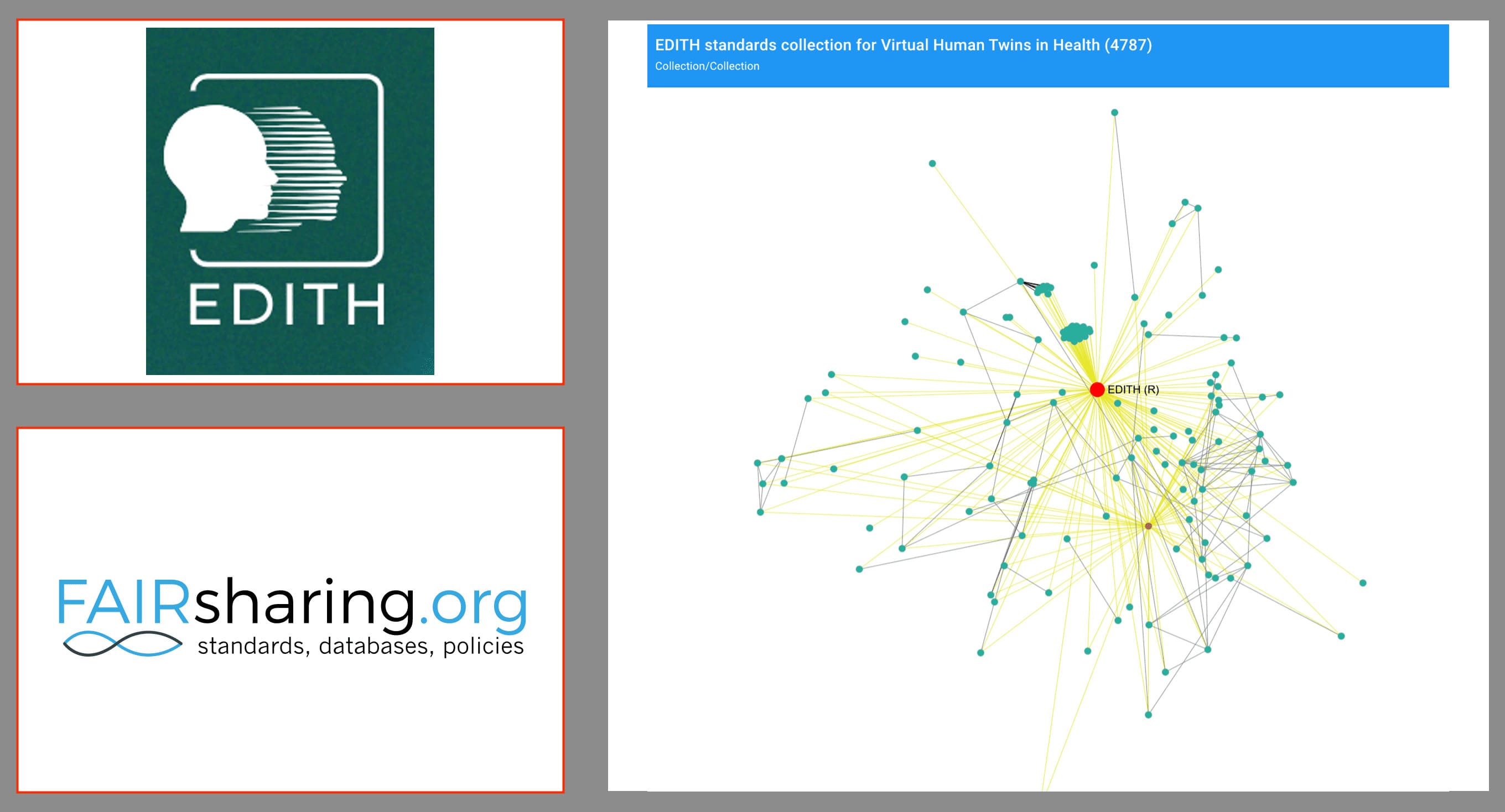This post has been written by guest author Gerhard Mayer, Research Associate, Scientific Databases and Visualization (SDBV) group, Heidelberg Institute for Theoretical Studies.
The EDITH (Ecosystem Digital Twins in Healthcare) project builds an ecosystem for a Virtual Human Twin (VHT) in healthcare.
This VHT can be seen as a multi-scale and multi-component integration of organ-specific Digital Twins in Healthcare (DTHs). The first draft of the VHT roadmap can be downloaded from
EDITH CSA Deliverable 3.2: first draft of the VHT roadmap and an overview about the used standards is given at The role of standards in defining an ecosystem for Virtual Human Twins (VHTs) .
To ensure interoperability between the DTHs and to simplify the access and use of them, the EDITH ecosystem will rely on standards for the computational models, the used data, and terminologies. For describing the data and models with metadata annotations, terms from standard ontologies are used.
The standards can be either formal technical standards defined by official Standard Defining Organizations (SDOs) like ISO and CEN, or de facto community standards, like e.g. defined by the COMBINE network (
Combine: Coordinating standards for modeling in Biology ) or the GA4GH.
To ensure this ongoing update of recommended standards, it was necessary to create 47 records in FAIRSharing. This work was carried out in close collaboration with the FAIRSharing team and resulted in the allocation of DOIs to these new records. This process has enabled the creation of an “EDITH Standards Collection” on FAIRsharing, which serves as a comprehensive list of the recommended standards and can be easily extended and updated. This collection ensures that the digital health community always has access to up-to-date essential standards for the EDITH project.
